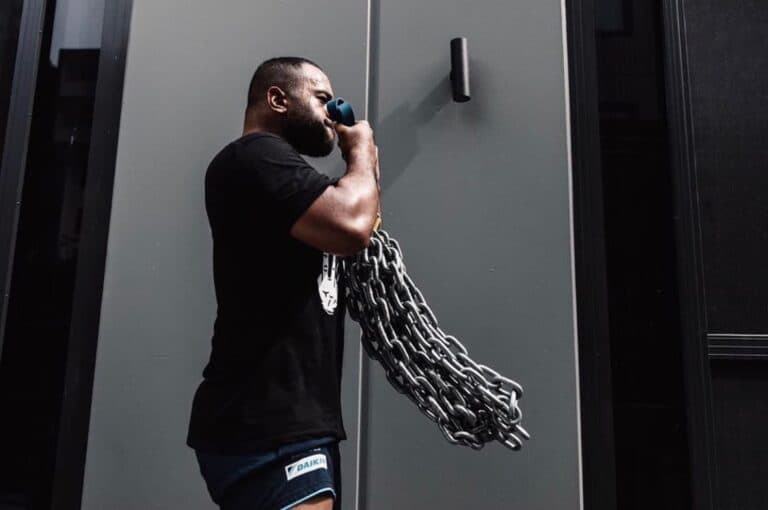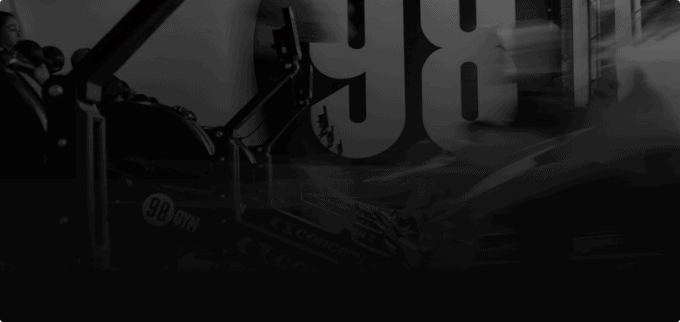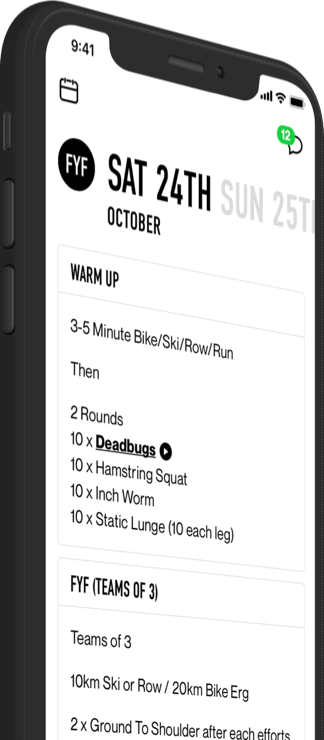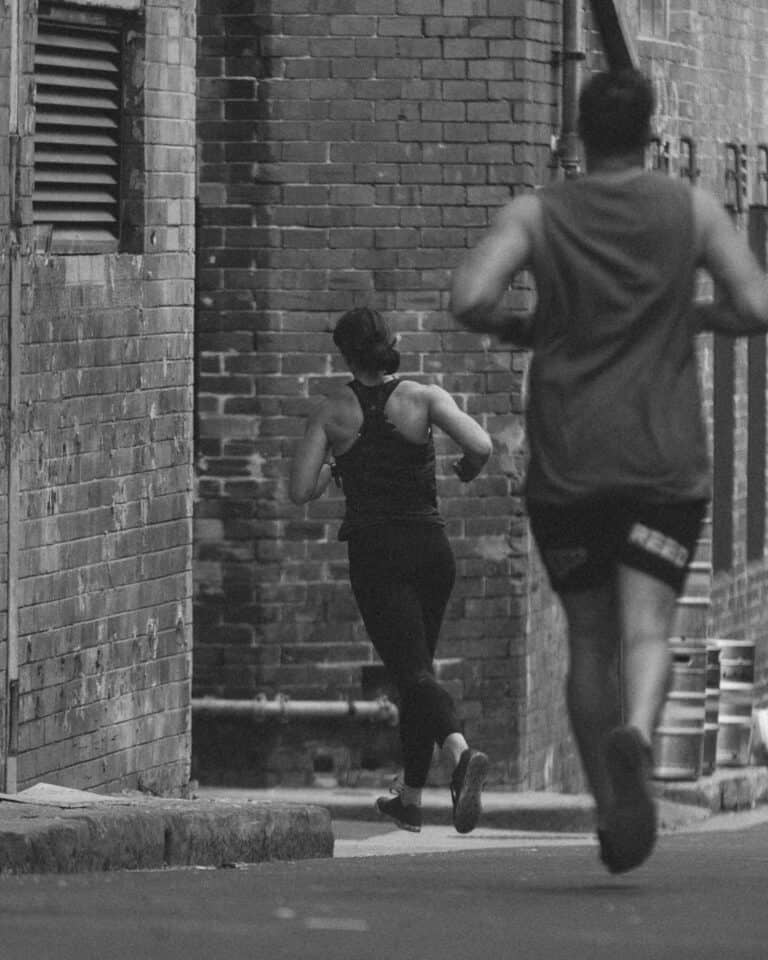Rusty Whitt M.Ed. CSCS
Texas Tech University Football
On January 6, 2004, I found myself standing in a formation along with 278 other United States Army Airborne Infantrymen in a parking lot of the oldest existing barracks in Fort Bragg, North Carolina. We were there to embark on the first phase of the Special Forces Qualification Course, known to many as the “Q” course. This first step in the pipeline was “Special Operations Preparation and Conditioning Course (SOPC). If we successfully passed this 3-week course, we would attend Special Forces Selection. Located in a remote area called Camp Mackall, SF Selection is a gruelling, physical and mental gut check that usually causes 60% of participants to either quit or withdraw due to injury. SOPC existed to enhance a soldier’s chances and better prepare us for the rigours we would face in less than a month. We had no idea what was about to hit us.
At 7 PM, several Dobermans and German Shepherds, held on leashes by Green Beret instructors, interrupted our formation, aggressively sniffing and probing our ranks. After our instruction to remove our hats, all jewelry, watches, wedding rings, wallets, and phones, we moved in formation to a nearby dirt road. Then we started running down a hill. The pace was faster than most could sustain. Some soldier’s bootlaces were not tied. Some soldiers didn’t wear belts to hold their pants up. Most were not prepared for the next 9 hours of continual calisthenics, bear crawling, running, partner carrying, and various other vomit-inducing activities. Within the first 24 hours of the “Q” course, 150 soldiers had quit, or were physically unable to pursue their dream of becoming a Green Beret.
This “training” seemed chaotic and overtly stressful, many strong young men who were not used to failure, rapidly did just that, and most simply did not have the wherewithal to cut it. I witnessed a compound fracture of a young trainee’s fibula and tibia during combative training, a soldier tear his ACL stepping in a hole, and we had a trainee commit suicide. That was the first week. We had callouses on our feet and hands, bruises everywhere, stress fractures, shin splints, tendonitis in our shoulders and knees, sprained ankles, and missing toenails. However, armed with resolve, self-confidence and grit, we were prepared for the next phase. After three weeks, 68 of us remained from the original 278 and climbed onto the trucks to go to selection. Of those that remained, we knew everyone’s names and respected one another. Upon our arrival to Camp Mackall, we unloaded our bags and again we waited in a formation. Near our formation, obvious to everyone was a large, hand painted sign that read as follows:
SPECIAL OPERATIONS TRUTHS
- HUMANS ARE MORE IMPORTANT THAN HARDWARE
- QUALITY IS BETTER THAN QUANTITY
- SPECIAL OPERATIONS FORCES CANNOT BE MASS PRODUCED
- COMPETENT SPECIAL OPERATIONS FORCES CANNOT BE CREATED AFTER EMERGENCIES OCCUR.
These SOF truths come to mind while watching many high school and college programs
attempt to mimic Special Operations Forces training tactics. Any coach must factor in safety and efficacy elements when attempting to develop a challenging training/ indoctrination scenario.
First, let us discuss who and what composes a Special Operations Force in the U.S. Military.
US Army Rangers-Platoon sized elements trained in airfield seizures, counter-terrorism/ counter insurgency missions, and experts in aggressive maneuvers like raids and ambushes. Rangers eventually become overall masters of basic infantry tactics. Rangers are widely known as the most disciplined well-conditioned, highly respected and elite soldiers in the US Army. The Ranger tab signifies a graduate of one of the toughest military courses in the world, the 3-month long US Army Ranger School.
US Army Special Forces– Known as “Green Berets” Special Forces teams are composed of 12 highly trained soldiers that conduct missions in hostile areas and harsh environments. Before graduating from the SF “Q” Course, soldiers will learn an operational specialty, such as communications, engineering, combat medicine, weapons training, and/or intelligence/logistics. All Special Forces operators must pass a foreign language and receive training in that specific language’s culture. The Special Forces Qualification Course takes a year and a half to two years to complete. Only then can the graduate don the “Green Beret”.
US Army 1st Special Forces Operational Detachment-Delta (1st SFOD-D) Known as “Delta Force” the name of this organization has changed often over the last several years. Members of this organization are the Tier 1 operators in the US Army’s Special Operations community. These soldiers go through a very secretive, thorough selection program and conduct missions that most Americans will know nothing about. Many of the members of this group are former Rangers or Green Berets, and conduct some of the most demanding, politically sensitive and dangerous missions assigned to the US Military.
US Navy SEALS- (Sea, Air, and Land) the training to become a SEAL has become legendary. SEAL teams operate in a small platoon sized element (around 13 operators) and conduct counter-terrorism, counter-insurgency, high value target missions, foreign internal defense missions, reconnaissance and intelligence gathering, and direct action missions, just to name a few. Training to wear the coveted SEAL Trident can take anywhere from 1.5 to two years. BUD/S (Basic Underwater Demolition training) is a 6-month long grind that leaves most trainees battered both emotionally and physically, with a failure rate that hovers around 80%. The Navy also has Special Warfare Combatant-Craft Crewmen, and Special Amphibious Reconnaissance Corpsmen, both of which aid in the Navy Special operations mission.
SEAL Team 6-Known as “DEVGRU” The United States Naval Special Warfare Development Group consists of intensively trained SEALs that perform highly classified missions, in the most dangerous areas in the world. SEAL Team 6 and the US Army SFOD make up the two “Tier 1” organizations of the US Military.
US Marine MARSOC (Marine Special Operations Command) Known as Marine RAIDERS, MARSOC is a relatively new organization, organized in 2006 to augment the overall mission of US Special Operations Command. It takes over four years to create a Marine Raider, as the applicant must have three years prior service as a Marine before applying for the course. With a training timeline similar to the US Army’s Special Forces Qualification Course, the Marine Raider aspires to be a “Critical Skills Operator”. Trainees must complete a lengthy course of language school, advanced weapons training, self-defense, SERE training, and counter-insurgency, counter-terrorism training before calling themselves a Marine Special Operator.
US Air Force Para Rescue –Air Force para-rescue conduct humanitarian missions, rescue or recover downed pilots, provide medical care and evacuation for wounded soldiers/sailors/marines, all of which occur in hostile territory. They provide light infantry support if needed. Also known as, “PJs” their training protocol lasts two years, with a failure rate also around 80%. A Para rescue man will receive training in military freefall school (HALO), Combat Diver School, military combat medicine, Survival School, (SERE) as well as training in weapons and patrol tactics. The Air Force also has Special Tactics Officers, Air Liaison Officers, and Combat Controllers, Special Operations Weather Technicians, and Tactical Air Controllers, all of whom conduct or support Special Operations missions. These personnel go through 1-2 years of training and will work directly with Navy, Marine, and Army Special Operations units.
160th Special Operations Aviation Regiment-Known as “The Night Stalkers” the helicopter pilots in this US Army unit are considered the best in the world. Outside of their intensive flight instruction, these aviators receive training in land navigation, combative skills, weapons, small unit tactics, and combat medicine. Pilots and crewmen/women from the 160th train with and conduct missions moving SEALS, Rangers, Green Berets and other Special Operators to and from targets.
All of these organizations have time and resource-intensive training protocols. It costs over 1 million dollars to train a single Army Special Forces soldier. Through these various programs, each member has matriculated through possessing desirable qualities such as self-confidence, determination, loyalty, reliability, problem solving skills, maturity, physical and mental toughness, exceptional fitness, and a high proficiency in their jobs.
Any coach of every sport would want all of these traits bestowed on his/her athletes.
Remember.
YOUR PLAYERS ARE NOT SEALS, and contrary to some opinions in the conditioning world, these Special Operators are not competitive athletes. They are warfighters. Sure, they do have athletic abilities. They have to run extraordinary distances, carrying excessive amounts of equipment, they have to be proficient and coordinated under high amounts of stress. Winners and competitors of the Ranger Challenge held annually in Fort Benning, Georgia have to do some of the most physically demanding events one can imagine, and just finishing the event is an accomplishment. Many can do 100+ strict pushups in two minutes and run a marathon at a 10 minute pace with 50lbs on their back. They have exceptional cardiac conditioning. Many are quality triathletes and cross-fit competitors. They have extreme endurance for pain, discomfort, and can operate under stress for a long duration.
Through the mass media explosion of the last twenty years, along with social media, video games, books, movies, TV shows and documentaries, the public has become acutely interested in elite level military training. However if you mimic their training you could get your players hurt, or maybe something far worse could happen. Responsible coaches may feel enticed to expose their athletes to some of the training methods our elite warfighters undergo, and should consider the following factors.
- Risk Assessment
Special Operations forces receive training to execute extremely high-risk missions under every type of weather condition, and in treacherous terrain. There is a reason that they receive “Hazardous Duty Pay”. Consider this example: It’s 3 AM, and a “Green Beret” is wearing Night Vision Goggles, about to grab a 3″ rope and “fast rope” from a height of 40 feet, out of a loud, vibrating, hovering helicopter in total darkness, wearing around 100 pounds of equipment. He will hit the ground as if he jumped from a height of 6 feet. He and his teammates immediately find themselves surrounded by an unknown sized element of Taliban fighters. Helicopters are loud and draw attention. Any number of things can go wrong, as Murphy’s Law is in full effect. This sounds like a risky, albeit quite common scenario. Training for these combat situations often puts soldiers at great physical risk, to prepare the body and mind for extreme stress. Unfortunately, in the Special Operations community, it is quite common for these service members to experience accidents that cause serious injury or even death. Training for this situation is never “safe”, nor can it be for operational effectiveness. Given the massive amount of human resources and expensive equipment at the military’s disposal, all training scenarios must go through an extensive risk assessment process.
Coaches must conduct a risk assessment of every training methodology. Ask yourself these questions, and conduct a proper risk assessment.
- “What is the worst thing that could happen if we implement this drill/exercise?”
- “Do we have time to properly instruct the execution of this drill?”
- “Have the athletes ever been exposed to this stressor before?”
- “Does this drill have any carry over to our sport?”
- “Is there a way this drill/exercise can be introduced over a period of time?”
- “Has our sports medicine staff been notified of what we are doing, and do they approve?”
At a previous job, we conducted “MMA” style training and had athletes at one station hitting tires with a sledgehammer. We had two men on each tire, with four men at each station. While striking the tire, one athlete lost control of the hammer, and it struck the tire sideways. The hammer jettisoned into his teammate’s leg and fractured his tibia. The athlete had never swung a sledgehammer before.
- Time constraints
During that memorable initiation night that we experienced back in January 2004, (known as a “Smoke Session”) we were “smoked” performing simple body weight calisthenics. We did not use any weight implements like logs or zodiac boats. We trained continually for about 9 hours straight. This is more time than the NCAA allows for off-season training during an entire week. A full 48 hours passed before we performed log PT. Before our log PT session, we received a succinct, thorough instructional session on how to lift the massive logs somewhat safely. We first had to organize ourselves from tallest man to the shortest, for instance.
College and high school coaches are under more time constraints than ever. We have, as mentioned 8 hours a week to conduct weight training and conditioning each off-season period. During this time, our focus is on proper execution and technique of the following exercises:
Weight Room Movements
- Back Squat
- Front Squat
- Power-Clean
- Snatch Pull
- Power and Push Jerk
- Pull-ups
- Upper Body Presses
- DB Unilateral and Bilateral movements
- Open chain and close chain abdominal exercises
- Mobility drills for the ankles, knees, hips, thoracic spine and shoulders
Agility, Speed Training and Conditioning movements on the Field
- Dynamic mobility movements
- Change of direction skill work
- Plyometric drills
- Sled Pushing and Pulling
- Reactive Agility competition drills
- Anaerobic conditioning sprints
We are constantly tweaking technique and trying to perfect movement patterns. No players we inherit are finished products, entering our system with a variety of mobility issues, and they must get stronger. Weight gain (lean body mass) is a priority in our program. Combine these factors with our outside directional agility training, anaerobic conditioning, and speed development work, and we have little time left for anything else. I believe that as strength and conditioning coaches, strength and speed development is a priority, and both those aspects take time.
- Relevant Energy Systems
Every exercise that you expose your athletes to over time will change their movement mechanics and physiology. When formulating a strength and conditioning program, one should conduct a Needs Analysis of the sport they are preparing athletes for, and attack the energy systems necessary for success and injury reduction.
Special Operations missions can last anywhere from one hour to a week or longer. The infamous Battle of Mogadishu occurred after a “Snatch and Grab” mission went south. Originally, the plan was for the Rangers and Delta Force troops to be on the target site for less than an hour. Due to the shoot down of a Blackhawk helicopter, the situation became very complicated, and US forces were in harm’s way for the next 30 hours. Situations like this have occurred frequently throughout history and bear influence in the training protocols of soldiers. Necessary to success and survival, soldiers often carry 2-3 gallons of water (25lbs alone) from first-hand experience on a Special Forces team; we would wear approximately 60 pounds of body armor, and carry a “ruck-sack” that weighed up to 100lbs. We had to be prepared to carry this load anywhere from two to 12 miles. The current US Army PT test still consists of a two-mile run test, with maximum pushups in 2 minutes, and sit-ups in 2 minutes. Controversial as it is, muscular endurance is the basic standard for fitness and still a necessity for mission effectiveness. Various Special Operations units have emphasized and prioritized strength training in their daily regimens. Many have established dedicated training facilities and programs to accomplish the goal of improved warfighter readiness and health. However, their training will incorporate a necessary endurance aspect not relative to “power sports” such as Football, Volleyball, or Track and Field-(sprinters and throwers).
Coaches involved with Power sports must consider the following aspects of strength, and plan accordingly.
*Absolute Strength
*Strength Speed
*Speed Strength
*Explosive Strength
*Absolute Speed
All of these aspects are included in our yearly training cycle. Again, developing strength and speed takes time, intensive coaching, and requires adaptation in athlete physiology and movement patterns.
- Teamwork Training/ “New Sheriff in Town” Indoctrination-Remember the following?
- HUMANS ARE MORE IMPORTANT THAN HARDWARE
- QUALITY IS BETTER THAN QUANTITY
- SPECIAL OPERATIONS FORCES CANNOT BE MASS PRODUCED
- COMPETENT SPECIAL OPERATIONS FORCES CANNOT BE CREATED AFTER EMERGENCIES OCCUR.
Strength and conditioning professionals may find themselves in a situation where a coaching staff wants to “set the tone” early in a semester training cycle, after a disappointing season, or early in a new coach’s tenure. Competent Special Operations Forces cannot be created after emergencies occur. Your athlete’s welfare is in your hands. (Humans are more important than hardware) Many athletes will be ready and anticipate this urgent approach, which may manifest itself into large-scale group calisthenics, “team-work” drills, long duration running events, and/or high volume weightlifting sessions. Recall, “Quality is better than Quantity”.
Most of the time these sessions will conclude without any issues, however in the last decade this type of training has resulted in serious injury and death. Some factors to consider are the following:
*Sickle Cell Trait
*Rhabdomyolysis
*Heat Stroke/Exhaustion
*Cardiac events (undiagnosed heart defects)
*Accidents involving weightlifting or heavy implement lifting
A strength and conditioning staff can instill a sense of urgency in a team early on, while escalating the volume and intensity over a period of weeks. Our returning players perform 75% of the established run test on the first week, while freshmen and junior college transfers perform 50% of the test. Over the course of an 8-week summer, we have had a “Judgement Day” conditioning challenge midway through the summer, and then have instituted a culminating event at the end of the summer offseason. Despite the wishes and wants of the coaching staff, I have found that the 33% rule applies to collegiate athletes over the course of May “downtime”, or over a 2-3 week Christmas Holiday break. I suspect that 33% of your team will perform your “take-home” packet to the letter, while 33% will pick through the workout and do what they believe to be “just enough”. The last 33% will consist of new players that do not know what is in store for them, and those returners who will simply train very little or do nothing.
This last group is at a high risk of having an episode early on during the training cycle, so consider the current sensitive climate surrounding athletic injuries when designing your first two weeks of an off-season. (1% may do your workout packet and then extra work).
The following are some examples of how to instill that urgent mindset at the onset of your offseason.
- Strict time standards, with each athlete dressed identical standing in a stretch line in a position of “parade rest” or “attention” awaiting training.
- Perfectly synchronized side straddle hops (jumping jacks), mountain climbers, push-ups, or squat jumps with re-starts after each mistake
- Bonus “point system” for those athletes that win repetitions of your initial run test or agility drill.
- Bonus points for completing a recommended amount of repetitions in the Bench, Squat, or Power Clean based on previous max testing.
Conclusion
Strength and conditioning professionals are often the last line of defense of common sense training and have to stand their ground on matters of periodization, escalation of intensity and unrealistic training scenarios. Formulate a plan ahead of time, anticipate the training atmosphere that a head coach wants to instill, devise a strategy and stand behind it. Special Operations Forces cannot be mass-produced. It falls on the strength and conditioning professional to create a training culture that produces results over time. Document gradual improvements and report them to the coaching staff. When the specific sport coaches understand there is a sustained, dedicated process towards improvement, you are less likely to have sudden, severe accidents or injuries while training.
Rusty Whitt (M.ED. CSCS) graduated from the U.S. Army’s John F. Kennedy Special Warfare Center and School in February 2006. He specialized in communications (18E), served on a Special Forces ODA for three years, and deployed to Iraq during Operation Iraqi Freedom. He currently serves as the Head Strength and Conditioning Coach for the Texas Tech Red Raiders Football Program.
For more articles like this one and to trial our online program visit the link below
www.98gym.com/sign-up









